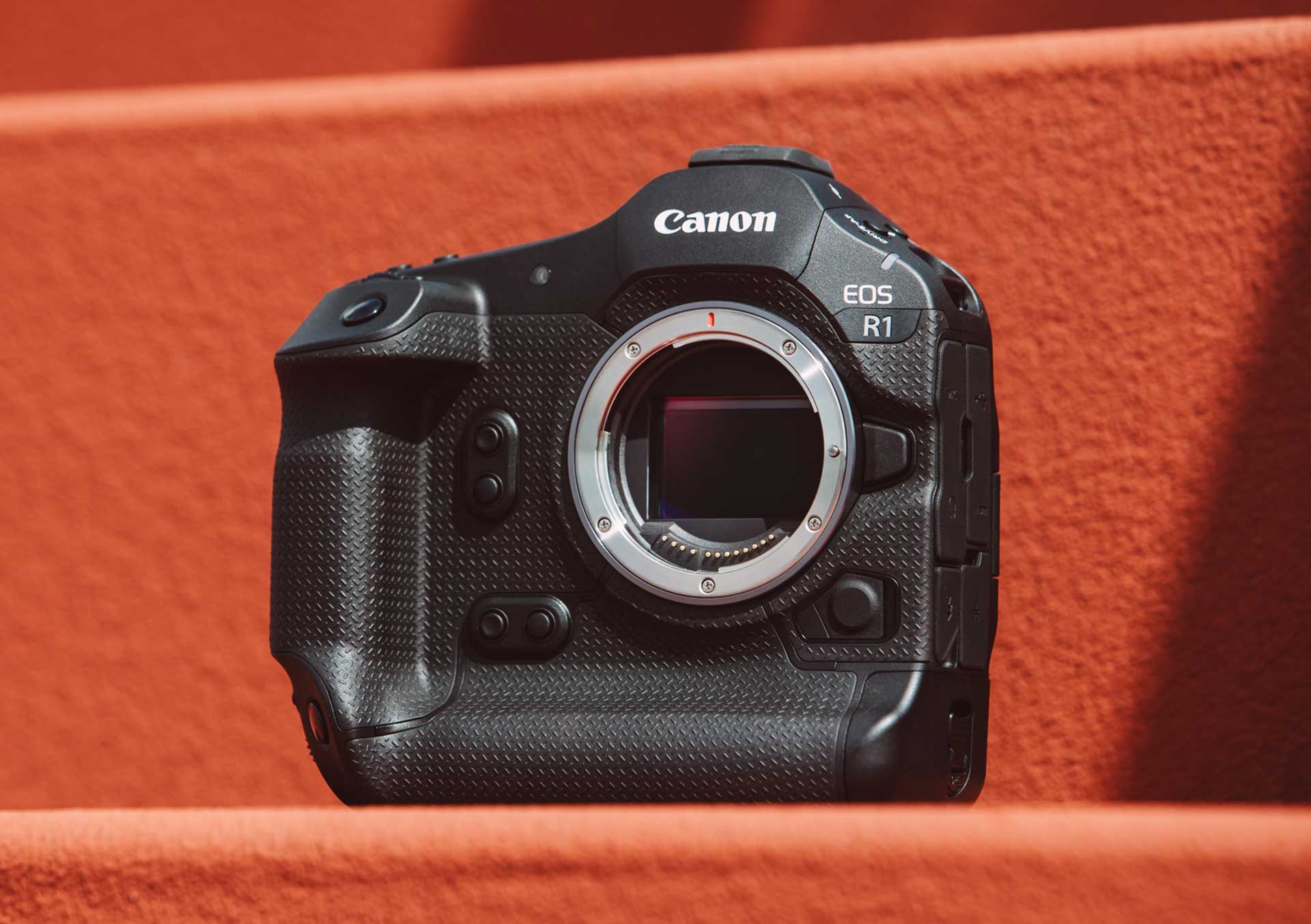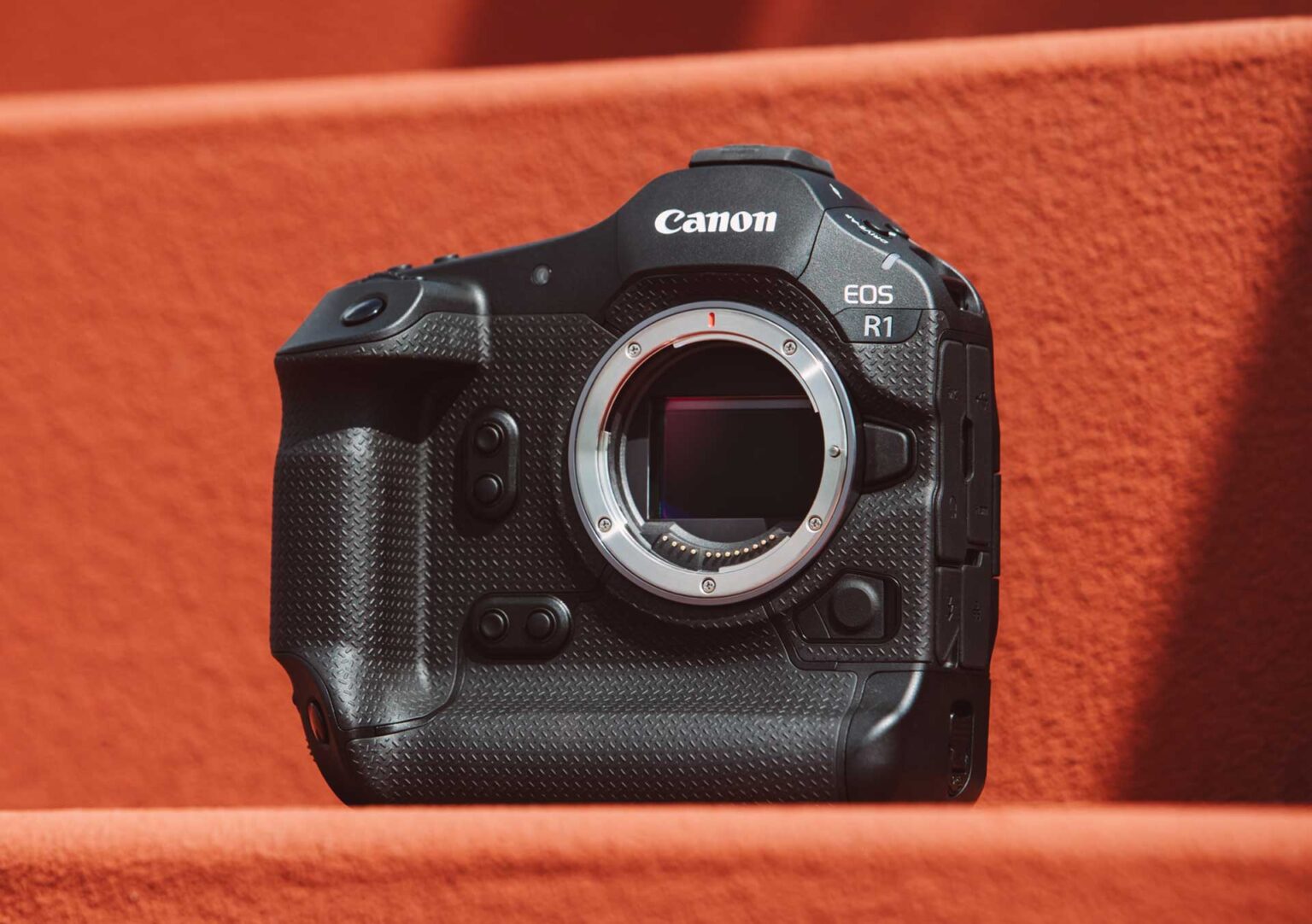
Canon EOS R1, the big chance to impress. Following the announcement EOSHD went back through the R1 rumours, which hinted at stunning achievements to come. The flagship of flagships. No more cripple hammer. Quad Pixel AF, 80 megapixel, internal ND, dual gain sensor readout, 18+ stops dynamic range, global shutter and AI brain more intelligent than a thousands wedding photographers. Alas, Canon have ended up playing it safe, and at the same time revealing a beta camera which nowhere near even finished.
As technological statements go, the R1 is not much of a statement is it? It does not arrive on shop shelves saying “I am the pinnacle of RF mount”. It arrives on reviewer’s shelves a buggy mess and misses the entire summer sports season, including the Paris Olympics.
The bundled launch with the R5 Mark II is also odd. The use of so many Olympics sample photos in the marketing only highlights the failure of this launch. The Olympic flagship won’t be at the Olympic Games 2024 in anything other than prototype form.
Although with the R1, Canon has stepped up to using stacked sensor technology (and with the R5 II also), it feels like a b-grade manufacturing process compared to Sony.
We have had stacked sensors for ages, even as far back as 2015. The Sony RX100 IV debuted this technology, and the Sony a9 debuted it for full frame in 2017. That’s 7 years ago. What is the EOS R1 sensor doing that’s 7 years better than the original a9? In this time, Sony has progressed to global shutter!
The other alarming trend for Canon is that they don’t have a share of the smartphone sensor market. Sony have the sheer volume of sensor sales to justify much more pioneering behaviour – larger sensor R&D budgets and increasingly modern fabrication technology. Canon doesn’t. In fact, Canon might even be using Sony’s fabs to finish the final BSI CMOS sensor in stacked form (unconfirmed).
Meanwhile when it comes to having both high resolution AND speed (cake & eat it) in one camera, the EOS R5 II falls short of the Z9 and Z8, and arguably short of the 2021 Sony a1. The R1 has the speed, but not the resolution and is arguably too close in specs to a much more affordable Nikon Z6 III to be of interest to anyone but pros. A camera of interest to enthusiasts it is not, which is totally understandable – but then what is the EOS R6 Mark II’s excuse for being so rubbish compared to Nikon? And why does the EOS R5 Mark II cost £4500?
I also take issue with the build quality in terms of finish and materials of the entire EOS R range, including the native RF lenses. I also take issue with the size and weight. The Sony a9 III demonstrates that such extreme speed and a global shutter doesn’t necessitate an active cooling fan or a big chunky heavy pro body with vertical grip and enormous battery. In fact the A9 III is smaller than some Micro Four Thirds cameras.
Surely sports pros and journalists want lighter, smaller cameras? So why are the R1 and R3 so big and the lenses even larger and heavier than the equivalent old EF mount versions?
The Nikon Z9 shows that Nikon can pioneer new features – the first pro mirrorless camera without a mechanical shutter, and the first to give us a comprehensive array of internal RAW movie codecs. For Nikon to then shrink all this down and put it into an enthusiast camera, for $3200 (the Z8) shows just how lazy Canon have become.
Given it is such a conservative camera by 2024 standards with long-established technologies, the R1 won’t even ship remotely close to this announcement. Customers will have to wait until November 2024, long after the summer of sport is over.
I believe it was Canon’s intent to get it ready long before now, and have it available for the Olympics, but by November even the F1 season will be nearly over when the R1 comes out of beta testing.
Luckily, the Canon EOS R3 already exists and has already been adopted by many of the Canon faithful. This being a camera that treads heavily in the footsteps of the long departed 1D X Mark III DSLR already, did we really need another?
I myself were expecting something to make the three and a half year old Sony a1 look a bit past it.
In fact, this most expensive of flagships only goes to show how far behind Canon has fallen in terms of their ability to compete on purely technological terms.
The early lead in colour science and on-sensor AF seems to have evaporated. The initial promise of viewfinder eye AF point selection hasn’t materialised. Another promise of Canon mirrorless hasn’t come to fruition either, that of smaller and lighter camera bodies and lenses VS the old obsolete DSLRs they’re replacing. RF lenses are as big and heavy as ever, and the bodies barely any lighter either.
Nikon with the Z6 III, Z8 and Z9 now have a clear advantage over Canon at all 3 different price ranges.
The R1 is a fumbled launch and the R3 was quite low key.
It’s also been noticeable how much more Sony bodies are in news gathering circles at the moment, even around Trump during the recent assassination attempt.
The Sony bodies are smaller and more nimble, further technologically ahead, and E-mount has a far wider array of lenses, many of them much smaller than the equivalent focal lengths in Canon RF.
I think this is the beginning of the end for Canon’s dominance in the camera market and perhaps they are actually OK about that. They are on 41% now – does it matter if they drop to 30%? Cameras as we know them have peaked. The whole thing is heading back to being a niche market, and the big money is elsewhere for Canon. It doesn’t make sense to commit top dollar and the majority of their manpower to making cameras and lenses when the other markets they’ve involved in have more potential.
Hence the recent lay offs, mirrorless cameras are now a side hustle.
If this wasn’t true, perhaps Canon would be demonstrating it. Perhaps they’d be using the very latest sensor technology and manufacturing it themselves. Perhaps they would be in the medium format market competing with Fuji and their GFX 100 II on sensor size. Maybe Canon would have an answer to the Nikon Z8 for $3200 and would have put far more resources into Cinema EOS to allow it to break into Hollywood and ARRI territory, rather than leaving it boxed into just being Video EOS. A better managed and more adventurous Canon would have been good for the entire industry. Sigma would have another mount to work on, for their superb full frame lenses. Stores would have better value for money to offer customers. Blogs would have more positive articles. Filmmakers would be able to point to an Oscar winner, shot in anamorphic on a Canon Cinema EOS camera.
Maybe in an alternative timeline.



